If you have less RAM installed on your Windows machine, then you can increase the virtual memory size of Windows 10/11 computers to boost their performance. Yes, you heard that right, there is a way to use your hard disk or a solid-state drive as a temporary RAM on your PC. The process is very easy to set up, and it works flawlessly. What it does is save a certain portion of your hard disk as temporary RAM and use it for performing all tasks. With this, you need to spend a lot of money on buying more RAM. Since you can expand RAM using the concept of virtual memory in Windows 10/11 PC.
Sometimes there is less virtual memory size on Windows 10/11, and you will get an error that your system is low on virtual memory. Having less virtual memory makes your system slow. So you should increase your paging file in order to use your Windows without any lags and crashes. Today in this post, w will guide you about what virtual memory is and how you can easily increase it on your windows machine.
Also Read
Page Contents
What is Virtual Memory in Windows 10/11
Applications and software use RAM to run on your system. However, there is also another type of memory a virtual memory, which is a pagefile that Windows uses to make the experience more smooth and to do tasks that a low RAM cant do. Windows uses some memory from your internal storage and converts it into a temporary RAM. Depending on the software and applications, how much RAM it consumes Windows can adjust the Virtual Memory.
However, Virtual Memory is not a permanent replacement for RAM; if you try to play high-end games on a low-end PC, it will probably crash because Virtual Memory is not used to handle such tasks; it just gives the system some sense of stability. Using virtual memory minimizes the load on the actual RAM, which is very convenient for the user to have a smooth experience on Windows.
How to Increase Virtual Memory Size on Windows 10/11?
The default paging file is not sufficient for all PC. If you have a low-end PC probably you will encounter error messages, or your software will start to crash. You can do multitask. There are two ways to increase your virtual RAM. Read the following guide to learn how to increase your virtual memory.
Increase your Virtual Memory Size by tweaking some system settings
Increasing Virtual Memory size is very easy. After configuring this setting, your PC will surely boot and perform faster.
Open the System settings and go to System, Click on About, and under the “Related Settings” section tap on the System info option.
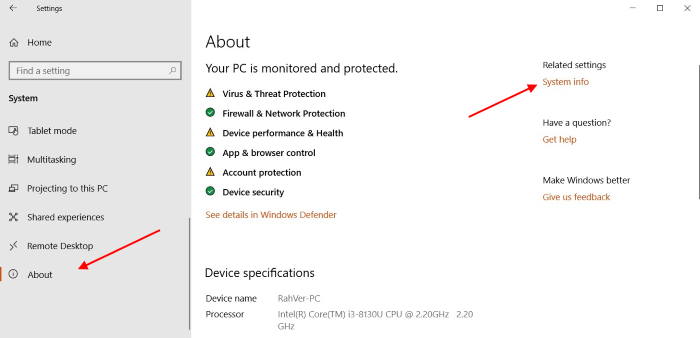
On the left pane of the Window click on the ” Advanced System Settings ”
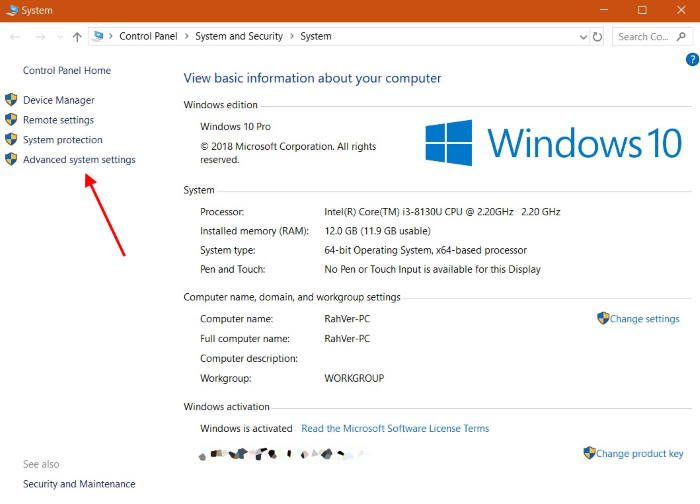
Go to the Advanced tab and click the Settings option under the Performance label.
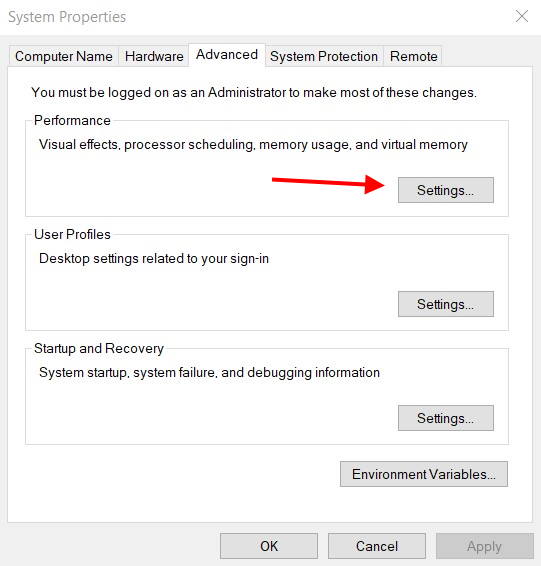
Click on the Advanced tab, and under the “Virtual Memory” section, click on the change button.
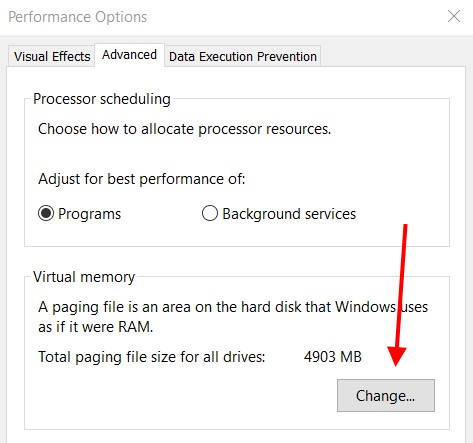
You will see “Automatically manage paging file size for all drivers ” option. Uncheck that and select the custom size option. Click on the Set button.
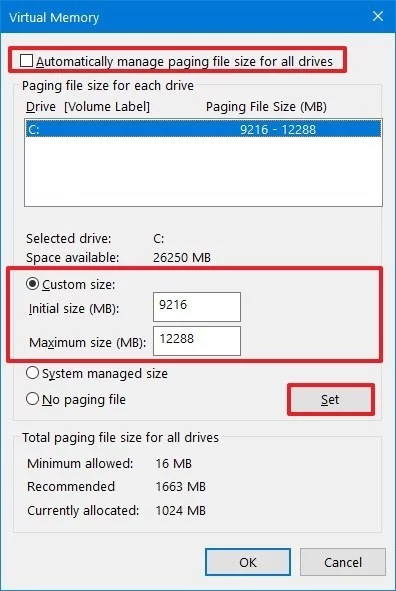
Note: By default, the maximum size is set to 8GB you have to do the math and specify the MB you wanna increase, It’s very easy to do you don’t have to be accurate. Here the maximum file is set to 12GB.
Click on the OK button and again click OK. Now Restart your computer.
After completing these steps, you should see a performance boost in your system. If you ever want to reset, simply check the “Automatically manage paging file size for all drivers” option.
Increase your Virtual Memory Size by using Command Prompt
You can also do the same via Command prompt. Here are the commands, paste them one by one in your Command prompt Window.
Click on the Start, Search for the command prompt, and open the Command prompt as an administrator.
To understand the current status of your paging file, type the following and press Enter.
wmic pagefile list /format:list
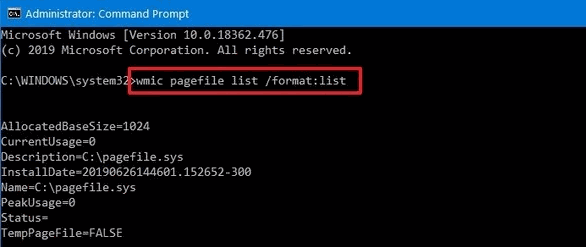
Type the following command to switch from Automatically manage paging file size for all drivers to the custom page file.
wmic computersystem where name="%computername%" set AutomaticManagedPagefile=false

To set your custom paging file, initial and maximum size value type the following Command.
wmic pagefileset where name="C:\\pagefile.sys" set InitialSize=YOUR-INIT-SIZE,MaximumSize=YOUR-MAX-SIZE

Note: Specify your value in place of YOUR-INIT-SIZE and YOUR-MAX-SIZE. Here is an example,
wmic pagefileset where name="C:\\pagefile.sys" set InitialSize=9216,MaximumSize=12288
Restart your computer. You can do it manually or by using the following command in the command prompt.
shutdown -r -t 00
After you do the following steps, your Virtual memory size will be increased, and you will have much stable and fast Windows.
Conclusion
The best way to fasten up your Window is to use virtual memory. By increasing your virtual memory size in windows 10/11 machine, you can gain much faster app loading and overall faster experience. But do keep in mind that virtual memory is not a complete substitute for RAM. So in case, your workload is heavy, i.e., photo editing, graphics designing, rendering, etc. Then consider investing in RAM for your PC or laptop. And in case you feel any difficulty following these procedures above for increasing virtual memory, then comment down below. Our technical team will come to your rescue right away.
